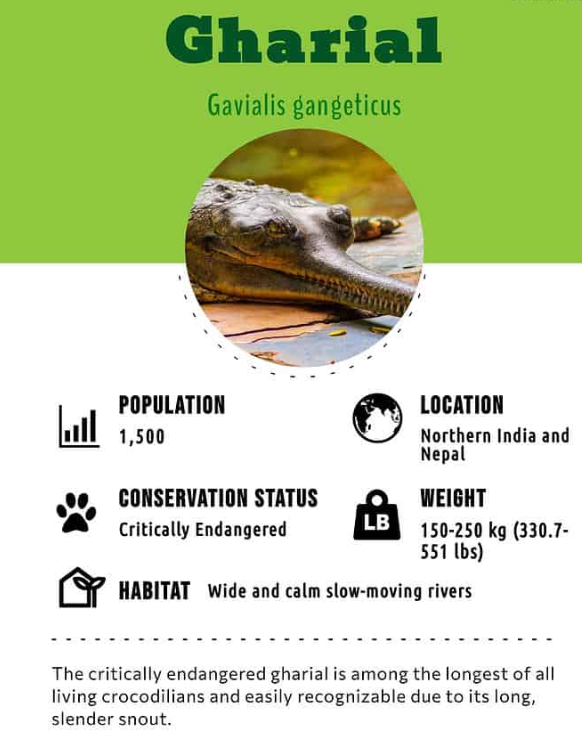PREVIOUS
Gharial and Sloth Bear in SRP
July 16 , 2025
15 hrs 0 min
49
0
- The Standing Committee of the National Board for Wildlife (SC-NBWL) had recommended including the Gharial and Sloth Bear in the Species Recovery Programme.
- It is executed under the Centrally Sponsored Scheme for Integrated Development of Wildlife Habitats (CSS-IDWH).
- SC-NBWL is constituted under the Wildlife (Protection) Act, 1972.
- Gharial lives in freshwater rivers, mainly tributaries of the Ganga River in India and the Rapti-Naryani River in Nepal.
- It is classified as Critically Endangered by IUCN.
- It has also included in Appendix I of the Convention on International Trade in Endangered Species of Wild Fauna and Flora (CITES).
- The Gharial has the thinnest and most elongated snout among all crocodilians.
- The Sloth Bear is a small, and is a solitary, generally nocturnal animal.
- It is native to India, Sri Lanka, and Nepal.
- It inhabits five biogeographic zones in India, such as Peninsular India, Western Ghats, Deccan Plateau, Gangetic Plain, and Northeast.
- The Sloth Bear is classified as Vulnerable by IUCN.
- It is listed under the Schedule I of the Wildlife Protection Act, 1972 and Appendix I of the CITES.
- CSS-IDWH also provides financial and technical assistance to State and Union Territory (UT) Governments for wildlife conservation.
- So far, 22 species, including the Snow Leopard, Asiatic Lion, and the Great Indian Bustard, have been identified under the Species Recovery Programme.

Leave a Reply
Your Comment is awaiting moderation.


